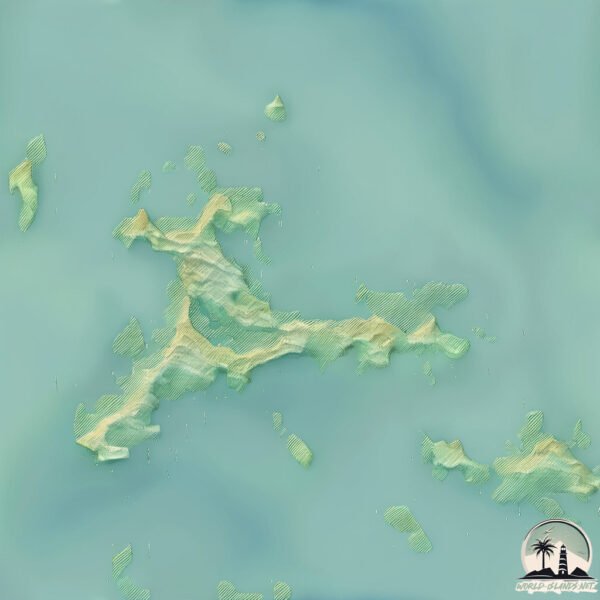Welcome to Sijiao Shan , a Temperate island in the Eastern China Sea, part of the majestic Pacific Ocean. This guide offers a comprehensive overview of what makes Sijiao Shan unique – from its geography and climate to its population, infrastructure, and beyond. Dive into the details:
Geography and size of Sijiao Shan
Size: 23.6 km²Coastline: 65.2 kmOcean: Pacific OceanSea: Eastern China SeaContinent: Asia
Sijiao Shan is a Medium Island spanning 24 km² with a coastline of 65 km.
Archipel: –
Tectonic Plate: Okinawa – Located in the East China Sea, near the Ryukyu Islands and Taiwan, it’s involved in the subduction zone between the Philippine Sea Plate and the Eurasian Plate.
The geographic heart of the island is pinpointed at these coordinates:
Climate and weather of Sijiao Shan
Climate Zone: TemperateClimate Details: Humid Subtropical ClimateTemperature: Hot Summer
Climate Characteristics: With continuous rainfall and hot summers, this climate is common in some coastal regions, supporting diverse vegetation.
Topography and nature of Sijiao Shan
Timezone: UTC+08:00Timezone places: Australia/PerthMax. Elevation: 89 m Mean Elevation: 43 mVegetation: Agricultural MosaicTree Coverage: 68%
The mean elevation is 43 m. The highest elevation on the island reaches approximately 89 meters above sea level. The island is characterized by Plains: Flat, low-lying lands characterized by a maximum elevation of up to 200 meters. On islands, plains are typically coastal lowlands or central flat areas.
Dominating Vegetation: Agricultural Mosaic
Vegetation: 10 vegetation zones – Very Highly Diverse Island
Infrastructure and Travelling to Sijiao Shan
Does the island have a public airport? no .
Does the island have a major port? no .
The mean population of Sijiao Shan is 1188 per km². Sijiao Shan is Densely Populated. The island belongs to China .
Continuing your journey, Qushan Dao is the next notable island, situated merely km away.
Xihui Cliff Hotel in Zhoushan Archipelago
Here is Xihui Cliff Hotel in Sijiao Island of Shengsi County in Zhoushan Archipelago. It's one of the best choices and destinations ...
Xihui Cliff Hotel in Zhoushan Archipelago
Here is Xihui Cliff Hotel in Sijiao Island of Shengsi County in ...
Here is Xihui Cliff Hotel in Sijiao Island of Shengsi County in Zhoushan Archipelago. It's one of the best choices and destinations ...
走遍全国的100座海岛|浙江--泗礁岛,3天2夜,780元! 是撒野之旅也是人生之旅 野生玩家 交换世界计划 我的小城旅行日记 为中国小城上分
走遍全国的100座海岛|浙江--泗礁岛,3天2夜,780元! 是撒野之旅也是人生之旅野生玩家交换世界计划我的小城旅行日记为中国 ...
走遍全国的100座海岛|浙江--泗礁岛,3天2夜,780元! 是撒野之旅也是人生之旅野生玩家交换世界计划我的小城旅行日记为中国 ...
嵊泗列岛
面朝大海,春暖花开!嵊泗列岛,是舟山群岛中的一部分,也是我国唯一国家级列岛风景名胜区,以“碧海奇礁、金沙渔火”的海岛 ...
面朝大海,春暖花开!嵊泗列岛,是舟山群岛中的一部分,也是我国唯一国家级列岛风景名胜区,以“碧海奇礁、金沙渔火”的海岛 ...
China is classified as Emerging region: BRIC: Brazil, Russia, India, and China – Economies noted for their rapid growth and increasing influence on global affairs. The level of income is Upper middle income.
News – Latest Updates and Headlines from Sijiao Shan
Stay informed with the most recent news and important headlines from Sijiao Shan. Here’s a roundup of the latest developments.
Loading...
Please note: The data used here has been primarily extracted from satellite readings. Deviations from exact values may occur, particularly regarding the height of elevations and population density. Land area and coastline measurements refer to average values at mean high tide.

